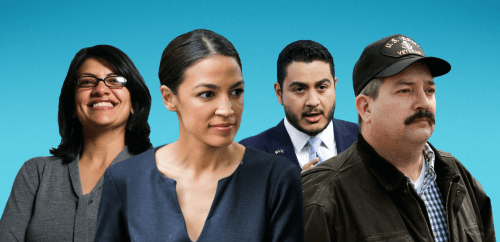I’ve returned a few times in this blog to the dismal track record of leftist candidates. Especially ones running for local or regional offices. We all know about the successes of Alexandria Ocasio-Corez, Ilhan Omar, and Rashida Tlaib in strongly Democratic Congressional districts. And the 2016 and 2020 Bernie Sanders campaigns offered some reason for optimism. But the overall track record of leftist candidates is terrible. It’s especially so at the local level.
Let’s talk about why. I think – at a minimum – leftist candidates repeat a small litany of mistakes.
4 Mistakes Leftist Candidates Make
Here’s a list of 4 of these mistakes.
1. Running on National Issues in Local Races
This seems rather intuitive. But I’ve seen candidates running races for city council, county supervisor, mayor, or state legislator on platforms that include a Green New Deal, Medicare for All, et al. Even when the candidates don’t explicitly name these things on the platform, they’ll mention them in speeches or derive their ‘local’ ideas directly from them.
These are great issues for leftist candidates running for President of the United States. They’re solid issues for the U.S. Senate, and they’re a good part of a House candidate’s platform. But, come on. Local politicians can’t achieve these things, and the voters know this. They’re not dumb.
The electoral left should think about how to make change at the local level. These discussions will involve connecting local issues to national issues. But local issues must be the driver in local races if the left wants to win. What do local voters care about most? What hits them the hardest? It’s not the Green New Deal. Leftists candidates tend to be remarkably bad at studying and using power, which requires more thoughtful deliberation that moves beyond just name-checking national ideas. The electoral left in the U.S. needs a serious discussion about what a good version of ‘sewer socialism‘ would look like.
2. Using the Generic ‘Progressive’ Label
Leftist candidates understand they have to build broader coalitions to win. And so, the problem isn’t that the electoral left fails to understand the need to build a base. It does. It’s just that the electoral left is really bad at doing it.
Many leftist candidates wrap their campaigns around the ‘progressive’ label and try to use it to build a broad coalition of left-leaning voters. See, for example, the ‘bold progressive’ Cathy Glasson in Iowa. This rarely works. Even when it does work, it works only in heavily left-leaning areas. Neither Glasson nor Kimberly Graham – a more recent user of this strategy – came within a mile of winning their Democratic primaries. If the left keeps doing this, it’ll keep getting the same result.
Why? I’ll focus on two key reasons.
First, the term ‘progressive’ carries little ideological meaning in U.S. politics. It’s squishy enough to be claimed by anyone to the left of Joe Manchin. I have some thoughts about what it means, but those thoughts certainly aren’t in the heads of most people who hear the word. The upshot? The word leads to ideological confusion, where the press and public conflates different views and candidates.
Second, despite not meaning much on ideology, ‘progressive’ serves strong signaling functions. That is to say, it sends the signal to about half the Democratic base that the candidate is too ‘radical.’ Why? Because about half of Democrats identify as ‘conservative,’ ‘moderate,’ or ‘slightly liberal.’
By building campaigns around the generic ‘progressive’ label, leftist candidates thereby combine confusion with limited potential for growth. That’s no way to win. Bernie Sanders nearly overcame this issue in his 2020 campaign. But he did so despite his use of ‘progressive,’ not because of it.
3. Not Expanding the Electorate
Looking at the Democratic base, we don’t find a promising situation for leftist candidates. The base is far more conservative or moderate – and wealthy – than the electoral left prefers. And even this understates the situation. Many Democrats say they want Medicare for All, et al., but many don’t feel it. As largely a group of upper middle income people, Democrats often lack the dire material need for social democratic legislation.
One way for the electoral left – and leftist candidates – to handle this is to look for different voters. Plenty of people don’t vote, and those people tend to be disproportionately low income and/or non-white. Bernie Sanders certainly worked on this issue in 2020, and he had some successes. He did especially well with young people and Latinx voters. But he didn’t do nearly enough. This is essential to an electoral left strategy. And until it puts in place the tools to do this, the electoral left should probably pause running candidates in many cases.
4. Not Winning the Existing Electorate
Wait, what? Isn’t this the opposite of the third point? Leftist candidates need to do both. They need to bring new voters to the polls while winning as many current voters as they can. They’re not doing either right now.
With current voters, it’s often more about outreach and personal conversations. Less about labels. Sometimes it’s just about showing up to community events and sharing a drink.
I’ve spent the last few months walking Iowa City. Just about all of it. There are lots of areas of town I’ve never even thought about, and I think that’s true for leftist candidates in lots of places. People cluster together with economically and ideologically similar people. And this happens not as a conscious process, but rather as a normal part of living.
They should hold events in parts of town they’ve never visited. They should hold events in parts of town where they don’t think they have any voters. Without doing that, they never will.
